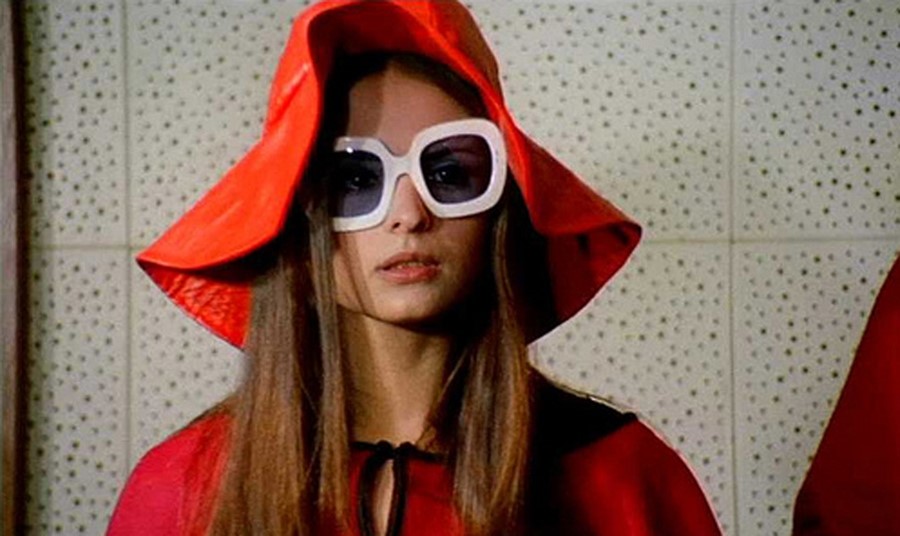Remembering the hypnotic beauty of the Spanish actress
The tragic car accident that killed Soledad Miranda (Soledad Rendón Bueno) in 1970 at just 27-years-old meant the Spanish-born actress never became the movie star her talent promised, her life ended just as an arranged meeting with a big-time agent would have propelled her to fame. However, Miranda’s intoxicating performances in a handful of exquisitely stylish European exploitation films have lent her a different kind of renown as a cult icon.
The king of 1960s sleaze cinema – Spanish-director Jess Franco – found his muse in the hypnotic beauty Soledad Miranda, casting her as a debauched femme fatale in films that included the sexadelic B-movie Vampyros Lesbos (1971) where Miranda played a direct descendent of Dracula with a penchant for black and purple witchy, folk-inspired kaftans with bell sleeves and a barely-there length typical of the era. The temptress’s red sheer chiffon scarf also provided a thread of narrative, appearing as she seduced and then killed her victims.

Costume was also integral to the plot of Franco’s Eugenie De Sade (1970) where the two central characters – a dysfunctional stepfather and stepdaughter who hold the libertine mentality that there is no morality other than desire – get their sadistic kicks though erotically-charged murders. Of course, the word sadism is itself derived from the Marquis de Sade, the 18th century philosopher who Napoleon imprisoned for his “depraved” writings. The film is based on Sade’s 1788 story Eugénie de Franval.
"Soledad Miranda’s far-out costumes captured a psychedelic plunge into the unknown"
As the warped father daughter duo set about committing the “perfect murder” it was decided that rather than hide in the shadows, they would make sure they are seen. The result is a screaming red avant-garde cape and wide-brimmed hat for Eugenie (Miranda), the cut of which echoed a movement at that time towards space-age minimalism led by the likes of fashion designer Paco Rabanne’s futuristic vision.

In a decade where sexuality was liberated, man went to the moon and hemlines headed in the same direction, Soledad Miranda’s far-out costumes captured a psychedelic plunge into the unknown. In She Killed in Ecstasy (1971), sexual mysticism met science fiction as the revengeful femme fatale (Miranda) is seen in her husband’s laboratory surrounded by freakish specimen jars as she wears a risqué contraption – a silver necklace-come-collar with strategically placed swirling pendants barely covering her chest.
If they had appeared on film at a later date, the costumes worn by Soledad Miranda would seem salacious and perhaps obscene, but the era’s naivety of experimentation and freedom of thought coupled with the chic psychotropic art direction of Franco’s films renders them dreamlike and nostalgic in retrospect.
